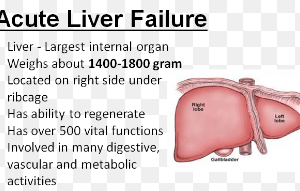
Just how dangerous is a blood sugar reading in the 500’s?
VERY.
“Blood sugar in the 500’s is dangerous, especially if it stays there for any significant period of time (like hours),” says Stacy Mitchell Doyle, MD, resident physician of FoodTherapyMD and long-time advocate of plant-based nutritional protocols.
Dr. Doyle continues, “If blood sugar remains this high, the body can develop a condition called ketoacidosis, which can result in organ failure.
“Severe dehydration is also a complication of blood sugar in the 500 range. Your body tries to eliminate the sugar by urinating it out.
“That is why one of the symptoms of hyperglycemia is frequent urination and increased thirst.”
With all the urination, in the body’s attempt to rid the excess sugar, the body is left dehydrated, making the sufferer thirsty.
“This dehydration damages the kidneys and other organs,” says Dr. Doyle. The kidneys are working so extra hard to rid the sugar, that they become stressed and damaged.
Acute kidney (renal) failure may result. There’s nothing wrong with the kidneys structurally, but they just become so exhausted that they begin shutting down – unless the blood sugar is promptly brought back to a normal level.
Renal injury may also result from the excess sugar in the renal arteries that feed the kidneys blood.
“Even blood sugar in the 400, 300 and 200 range is dangerous,” continues Dr. Doyle. “All levels of hyperglycemia destroy the heart and vessels in the body, making you prone to heart attacks and strokes.
“It also destroys the nerves in the body, and makes you susceptible to infections, as well as kidney failure and blindness.
“The only difference between a sustained blood sugar of 200 and one of 300 or 400 is how fast the destruction in your body occurs.”
But the destruction (if the situation is not treated) is just the same ultimately.
Ninety percent of diabetes cases is type 2, which is the body’s inability to efficiently metabolize sugar.
Though a person may have a stronger predisposition to type 2 diabetes due to it running in the family, remember this:
• Genetics load the gun.
• But lifestyle choices pull the trigger.
If the lifestyle choices consists of SAD – the standard American diet – you’re setting yourself up for type 2 diabetes – even if it doesn’t run in your family.
Another big risk factor for type 2 diabetes is lack of exercise.
Additional Risk Factors for Type 2 Diabetes
• Untreated sleep apnea blood sugar 500’s
• Excessive sitting on a daily basis 500
 FoodTherapyMD™ is the brainchild of Dr. Mitchell Doyle and recognizes that phytonutrients, the substances that make plant food so amazing, can be tailored to fight specific disease states.
FoodTherapyMD™ is the brainchild of Dr. Mitchell Doyle and recognizes that phytonutrients, the substances that make plant food so amazing, can be tailored to fight specific disease states.
 Lorra Garrick has been covering medical, fitness and cybersecurity topics for many years, having written thousands of articles for print magazines and websites, including as a ghostwriter. She’s also a former ACE-certified personal trainer.
Lorra Garrick has been covering medical, fitness and cybersecurity topics for many years, having written thousands of articles for print magazines and websites, including as a ghostwriter. She’s also a former ACE-certified personal trainer.
.


























